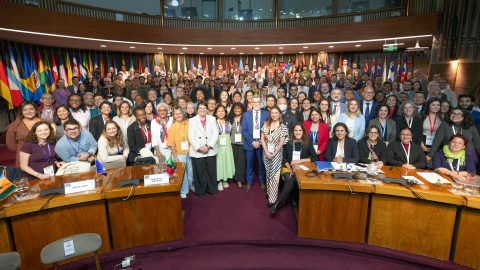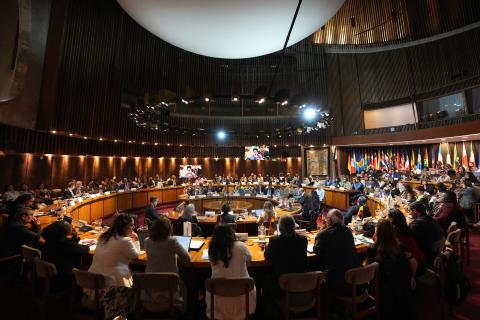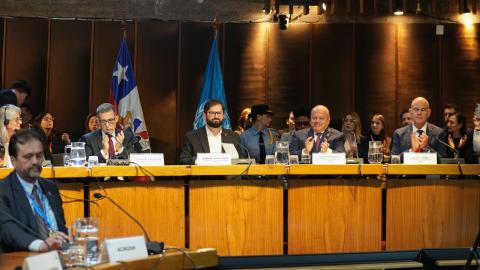Press Release
Integration is a basic component of productive transformation and of strategies for growth with equality, as well as a necessary instrument to promote countries’ development, authorities and experts from various nations agreed while gathered at the headquarters of the Economic Commission for Latin America and the Caribbean (ECLAC) in Santiago, Chile, during a high-level seminar.
At the gathering entitled “The Potential of the Central American Integration System (SICA) in Latin America and the Caribbean,” participants analyzed the lessons and challenges that the Central American integration experience has provided to the rest of the Latin American and Caribbean region.
The seminar was inaugurated by Hugo Beteta, Director of ECLAC’s Subregional Headquarters in Mexico, who welcomed those in attendance on behalf of the institution’s Executive Secretary, Alicia Bárcena. Also present at the opening session were Vinicio Cerezo, former President of Guatemala and President of the Esquipulas Foundation; Víctor Manuel Valle, El Salvador’s Ambassador to Chile in its role as holder of the SICA pro tempore presidency; and Alberto Cortés, Director for Costa Rica of the Central American Bank for Economic Integration (CABEI).
In his speech, Hugo Beteta presented an overview of the current economic and social situation in Central America, which is marked by vulnerability to external shocks. He reminded that even though 4% growth is expected for this year, the social challenges continue to be imposing, considering that one in every two Central Americans is poor and one in every four is indigent.
“Integration must have a substantial role if we want the region to have its own voice on the world stage. In that sense, the road traversed by Central America offers very important lessons,” Beteta said.
Ambassador Valle made a presentation in which he reviewed the main milestones of the Central American integration process, which culminated in the creation of the SICA in 1991. With 56 million inhabitants in its eight member countries, the SICA has become a strategic contact point with other blocs, such as the Organization of American States (OAS) and the Caribbean Community (CARICOM), among others, he highlighted.
Alberto Cortés stressed the importance of the environmental variable in all Central American projects and enumerated the challenges that must be addressed, such as the weakening of the public sector and of the State’s regulatory capacity as well as problems related to transparency, corruption and safety that recently surfaced and have undermined the credibility of institutions.
“This is a critical time to rethink what can be done with integration so that it truly fuels economic growth in the region,” the CABEI representative stated.
In his speech, former Guatemalan President Vinicio Cerezo explained how the Central American peace process allowed for a regional political decision—“to put an end to the domestic armed conflict”—transformed into a relevant institution for all of Central America’s inhabitants: the SICA. In this sense, the Esquipulas Agreements provide important lessons for the whole region, he said. He also underscored the importance of “Latin America’s Internal Sea,” the Caribbean Sea, in the configuration of large trade blocs in the world.
“The story of the end of domestic armed conflicts in Central America is a good example of how integration can work. We have legal and representative institutions, and a development bank. All of this could constitute a new development model for the region (…) The potential that we Latin Americans have in terms of taking action together is truly impressive,” Cerezo said.



